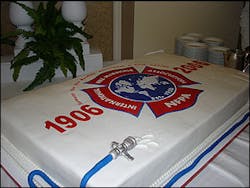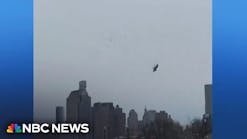In 1689, New York City established the Brent Masters' office similar to today's fire marshals.
Quebec and Montreal started its fire marshals office in 1868; and Massachusetts and Maryland appointed its first inspectors in 1894.
Those historical tidbits were shared Tuesday night during the 100th anniversary of the International Fire Marshals Association.
Originally known as the Fire Marshals Association of North America, the group was formed to share information about "fire bugs" should they leave the United States and enter Canada.
In 1916, New York City Fire Chief William Guerin wrote about the requisites for an able and successful fire marshal. They included:
- Possess in abundance that really scarce article-common sense
- Be broad minded and fair
- Possess unusual physical health that can stand long hour of work and exposure
- Be familiar with state laws and city ordinances
- Be familiar with criminal law and procedure
- Be a natural born detective or at least acquire the ability
- Know something of the chemistry of volatile oils, paints, chemicals generally and explosives
- Be familiar with building laws and building construction
- Possess physical and moral courage to the 'Nth' power
- Not follow any other occupation, for like art, the work of the Fire Marshal is a jealous mistress and will not permit a rival
- Be willing to work miracles for the benefit of his state.
The group has promoted safety, and on Oct. 9, 1911 they teamed up with Western Insurance Union to hold a Fire Prevention Day. Although it was primarily celebrated in Indianapolis, it was held in memory of the Great Chicago Fire in 1871.
The history of the organization was compiled by former presidents James "Robbie" Robertson and John Robison. Robertson was a long-time Maryland fire marshal.
In the mid '20s, the fire marshals would visit cities with unfavorable fire records, and attempt to get inspectors' offices established. They also managed to get jurisdictions to prohibit the public sale and use of fireworks.
The most significant results occurred in Pennsylvania. The year before they adopted a law outlawing fireworks, there were 1,702 incidents, 16 deaths and 43 people blinded. A year later there were no deaths or cases of blindness and only 40 incidents, according to documents.
In 1927, the FMANA was recognized as the "Fire Marshal Section" of the NFPA.
NFPA President and CEO Jim Shannon applauded the members for their rich history, continued volunteerism and commitment to their original mission. "We've worked together to make the world safer."
Shannon said he was pleased that his predecessors at NFPA agreed that the fire marshals deserved a seat at the table, calling them the "linch pin of the system."
IFMA President Jon Nisja said to save lives his organization is going to have to push for residential sprinkler codes. "Smoke detectors make a difference. But, we also know that people are often dead before the first 9-1-1 call is made."
Nisja said the fire marshals are committed and willing to pull out all the stops to make communities safer just as their founders did.






